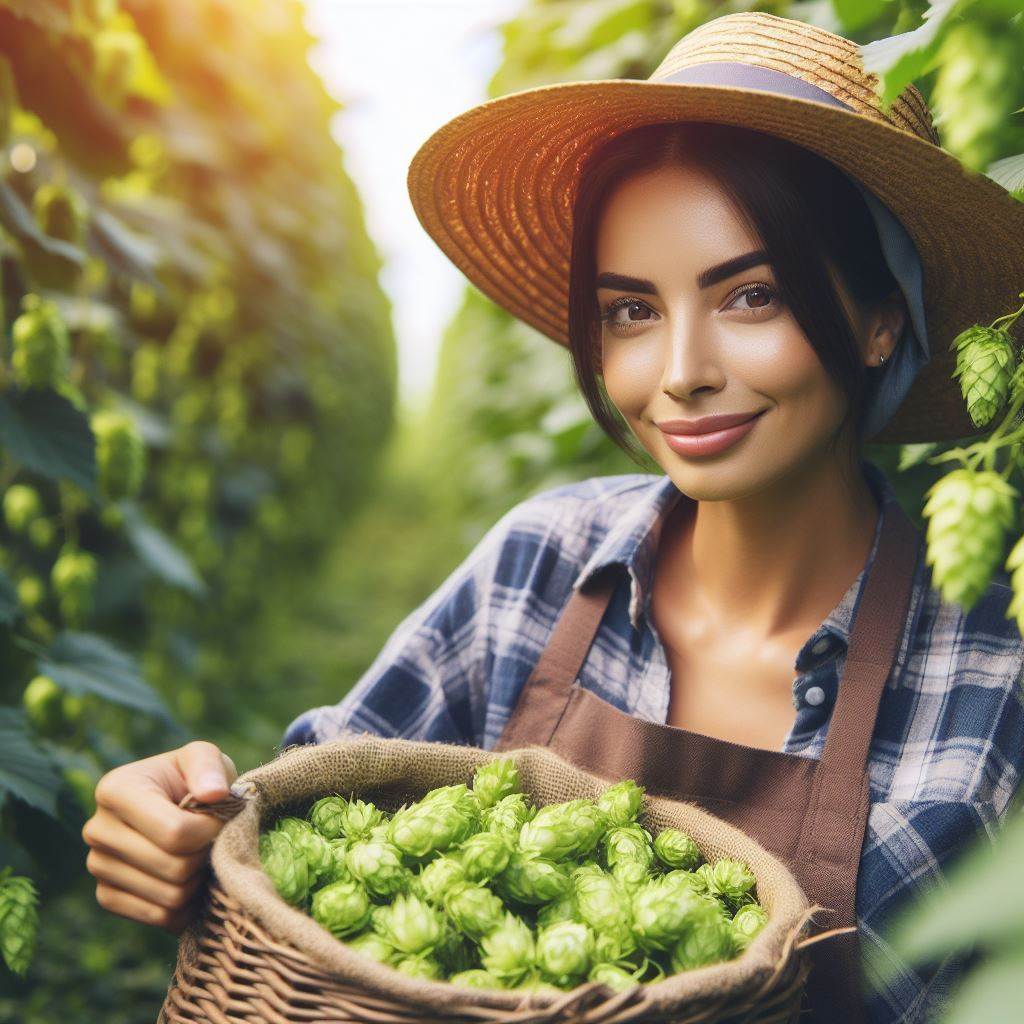Introduction
A. Introduction to Orchard Fruit Storage
Orchard fruit storage plays a vital role in maintaining the quality and freshness of fruits harvested from orchards.
Proper storage techniques are essential to extend the shelf life of fruits, ensuring they remain flavorful and nutritious for an extended period.
B. Importance of Proper Fruit Storage
The significance of proper fruit storage cannot be overstated.
It directly impacts the quality, taste, and longevity of fruits.
Without adequate storage measures, fruits can quickly deteriorate, leading to significant losses for orchard owners and suppliers.
C. Focus of the Blog Post
This blog post focuses on outlining the best practices for orchard fruit storage.
From temperature and humidity control to packaging and handling techniques, we’ll delve into various strategies aimed at maximizing fruit freshness and minimizing wastage.
In the upcoming sections, we’ll explore each aspect of fruit storage in detail, providing actionable tips and insights garnered from industry experts and research studies.
By implementing these best practices, orchard owners can optimize their storage facilities and ensure that their fruits reach consumers in the best possible condition.
Stay tuned as we unravel the secrets to effective orchard fruit storage, enabling you to preserve the quality and flavor of your produce while minimizing post-harvest losses.
Factors Affecting Orchard Fruit Storage
When it comes to the storage of orchard fruits, several factors can greatly influence their freshness and quality.
From temperature and humidity levels to fruit variety and maturity, each aspect plays a vital role in maintaining the fruits’ longevity.
In this section, we will explore the factors affecting orchard fruit storage and the best practices to ensure optimal conditions.
A. Temperature and Humidity Levels
Maintaining the correct temperature and humidity levels is crucial for orchard fruit storage.
High temperatures can accelerate ripening and lead to spoilage, while low temperatures can cause chilling injuries.
Transform Your Agribusiness
Unlock your farm's potential with expert advice tailored to your needs. Get actionable steps that drive real results.
Get StartedSimilarly, inadequate humidity can result in desiccation, while excessive humidity can promote mold growth and decay.
Best Practice
The optimal temperature for most orchard fruits is around 32 to 38°F (0 to 3°C).
Humidity levels should be kept between 85 to 95% to prevent desiccation.
B. Fruit Variety and Maturity
Different fruit varieties have varying storage requirements.
Some fruits, like apples and pears, can be stored for several months, while others, such as berries and stone fruits, have shorter shelf lives.
Additionally, the maturity stage at which fruits are picked also affects their storage potential.
Best Practice
Harvest fruits at the correct maturity stage, as immature fruits may not mature properly during storage.
Store fruits with similar storage requirements together to prevent ethylene exposure.
C. Packaging and Handling Techniques
Proper packaging and handling techniques are essential for preserving the quality and preventing damage during storage.
Packaging materials should provide sufficient protection while allowing for proper air circulation.
Best Practice
Use breathable packaging materials like perforated plastic bags, apple trays, or wooden crates.
Handle fruits gently to avoid bruising and damage that can lead to spoilage.
D. Ethylene Gas Exposure
Ethylene gas is a natural plant hormone that can speed up the ripening process.
While some fruits produce ethylene, others are sensitive to its effects.
Exposure to ethylene can cause premature ripening and lead to quality deterioration.
Best Practice
Store ethylene-producing fruits like apples and bananas separately from ethylene-sensitive fruits like peaches and strawberries.
Ventilate storage spaces to reduce ethylene accumulation.
E. Disease and Pest Control
Disease and pest outbreaks can significantly affect the quality and shelf life of orchard fruits.
It is crucial to implement proper disease management strategies and pest control measures to prevent infestations and minimize losses.
Best Practice
Regularly inspect fruits for signs of disease and pests before storage.
Maintain a clean storage area and avoid storing damaged or diseased fruits with healthy ones.
To summarize, successful orchard fruit storage depends on several key factors such as temperature and humidity levels, fruit variety and maturity, packaging and handling techniques, ethylene gas exposure, and disease and pest control.
By following best practices and implementing proper storage methods, orchard fruits can be preserved at their peak quality for extended periods, ensuring maximum enjoyment for consumers.
Read: Rice Harvesting Secrets: Improve Yield
Optimal Temperature and Humidity for Orchard Fruit Storage
A. Ideal temperature and humidity ranges for different fruit varieties
- Apples: Ideal temperature range for storing apples is between 30°F to 32°F (-1°C to 0°C).
- Peaches: Peaches should be stored at temperatures between 32°F to 34°F (0°C to 1°C).
- Pears: Pears require a slightly higher temperature range of 32°F to 36°F (0°C to 2°C).
- Oranges: Oranges prefer a temperature range of 40°F to 48°F (4°C to 9°C).
- Grapes: Grapes should be stored at a temperature range of 32°F to 35°F (0°C to 2°C).
B. Effects of temperature and humidity on fruit ripening and shelf life
- Temperature: Higher temperatures can accelerate fruit ripening, leading to a shorter shelf life.
- Humidity: Optimal humidity levels help prevent moisture loss and maintain fruit quality during storage.
- Low humidity can cause fruits to shrivel, while high humidity can promote mold and fungal growth.
C. Methods to control temperature and humidity in storage facilities
1. Temperature control
Use a refrigeration system to maintain the desired temperature for each fruit variety.
Regularly monitor temperature fluctuations and adjust accordingly.
Ensure proper insulation and sealing of storage areas to prevent temperature variations.
2. Humidity control
Install an efficient ventilation system to regulate humidity levels.
Use humidity control devices such as humidifiers or dehumidifiers to maintain optimal conditions.
Avoid storing different fruit varieties together to prevent cross-contamination and moisture transfer.
3. Proper air circulation
Implement a system that promotes uniform air distribution within the storage facility.
Avoid overcrowding fruits, as it can hinder airflow and increase humidity.
4. Ethylene control
Manage ethylene gas production by separating ethylene-producing fruits from those sensitive to it.
Use ethylene absorbent materials or ethylene scrubbers to minimize its accumulation and extend shelf life.
5. Regular monitoring and maintenance
Conduct routine checks to ensure temperature and humidity levels are within the optimal ranges.
Regularly inspect and maintain refrigeration systems, ventilation, and insulation to avoid malfunctions.
Showcase Your Farming Business
Publish your professional farming services profile on our blog for a one-time fee of $200 and reach a dedicated audience of farmers and agribusiness owners.
Publish Your ProfileIn essence, maintaining the optimal temperature and humidity is crucial for orchard fruit storage.
Each fruit variety has different requirements, and proper control of these factors ensures longer shelf life and better fruit quality.
Implementing effective temperature and humidity control methods, along with proper air circulation and ethylene management, will help maximize the storage potential of orchard fruits.
Regular monitoring and maintenance are essential for maintaining optimal conditions and preventing any adverse effects on the stored fruits.
Read: Harvesting Berries: Timing and Techniques
Proper Packaging and Handling Techniques
When it comes to orchard fruit storage, proper packaging and handling techniques play a crucial role in maintaining the quality and freshness of the fruits.
By preventing bruising and damage, using appropriate packaging materials for different fruit varieties, and following guidelines for handling and stacking, growers can ensure that their produce stays in optimal condition for longer periods.
Let’s explore the importance of these techniques in more detail.
A. Importance of proper packaging to prevent bruising and damage
Proper packaging is essential to protect orchard fruits from bruising and damage during storage and transportation.
By cushioning the fruits and providing a barrier against external pressure, packaging helps maintain their structural integrity.
Bruising not only affects the appearance of the fruits but also accelerates their spoilage, reducing their shelf life.
Using appropriate packaging techniques minimizes the risk of bruising and damage, ensuring that the fruits reach consumers in the best possible condition.
B. Types of packaging materials suitable for different fruit varieties
Cardboard cartons or lightweight plastic crates are commonly used packaging materials for most orchard fruits.
Soft fruits like berries require containers with foam or pulp inserts to protect their delicate nature.
For fruits prone to excessive moisture, such as apples, perforated or breathable packaging provides adequate ventilation.
Packaging materials should be sturdy enough to endure stacking and transportation, without compromising the quality of the fruits.
C. Storage containers and their impact on fruit quality
The choice of storage containers directly affects the quality and longevity of orchard fruits.
Containers should be made from food-grade materials and free from any contaminants that could transfer to the fruits.
Air-tight containers help maintain humidity levels, minimizing moisture loss and reducing the risk of shriveling.
To prevent ethylene build-up, which accelerates ripening, containers with ethylene-absorbing properties are advisable for certain fruits.
D. Guidelines for handling and stacking fruit to minimize physical stress
When handling fruits, it is important to use gentle techniques to avoid causing physical stress and damage.
Avoid dropping or throwing fruits into containers, as this can result in bruising and spoilage.
Stacking fruits should be done carefully to distribute weight evenly and prevent excessive pressure on the bottom layers.
Using appropriate padding or dividers between layers can further minimize physical stress and potential damage.
Essentially, proper packaging and handling techniques are vital for successful orchard fruit storage.
By selecting suitable packaging materials, considering the impact of storage containers, and following guidelines for handling and stacking, growers can ensure that their fruits remain fresh, unblemished, and marketable for longer durations.
Investing time and effort into these best practices ultimately pays off in the form of higher-quality produce and satisfied customers.
Read: Soil Health: Boosting Crop Quality & Yield

Managing Ethylene Gas Exposure
A. Introduction to ethylene gas and its effects on fruit ripening
Ethylene gas is a naturally occurring compound produced by fruits as they ripen.
It serves as a signal for other fruits to ripen and plays a role in the natural aging process.
However, ethylene gas can also have negative effects, causing over-ripening, softening, and decay.
Understanding the impact of ethylene gas is crucial in managing fruit storage effectively.
B. Strategies to reduce ethylene gas exposure in storage facilities
- Separation: Storing ethylene-producing fruits separately from ethylene-sensitive fruits can minimize exposure.
- Adequate Ventilation: Proper airflow helps to reduce ethylene gas buildup in storage facilities.
- Temperature Control: Maintaining optimal temperatures can slow down ethylene production and delay fruit ripening.
- Humidity Management: Controlling humidity levels prevents condensation, which can amplify ethylene gas effects.
- Good Hygiene Practices: Regular cleaning of storage areas prevents the buildup of ethylene-producing residues.
- Reducing Physical Damage: Bruised or damaged fruits release more ethylene gas, accelerating the ripening process.
C. Ethylene removal techniques and equipment
- Filters: Activated carbon filters can help remove ethylene gas from storage facilities.
- Ethylene Scrubbers: Scrubbers utilize chemicals like potassium permanganate to reduce ethylene gas levels.
- Modified Atmosphere Packaging: Sealed packaging can create an environment that limits ethylene exposure.
- Post-Harvest Treatments: Applying ethylene inhibitors or anti-ripening agents slows down the ripening process.
- Ozone: Ozone generators can be used to break down ethylene gas molecules.
D. Monitoring ethylene levels to maintain fruit quality
- Regular Testing: Monitoring ethylene gas levels using gas detectors helps identify potential issues before they escalate.
- Data Analysis: Tracking and analyzing ethylene levels over time provides insights into storage conditions and helps optimize protocols.
- Adjusting Ventilation and Filters: Modifying ventilation settings or changing filters based on ethylene gas measurements can effectively manage exposure.
- Collaboration with Experts: Consulting with industry professionals can provide guidance on managing ethylene exposure effectively.
- Regular Inspections: Periodic checks of storage facilities ensure that ethylene removal techniques and equipment are functioning correctly.
In a nutshell, understanding ethylene gas and its effects on fruit ripening is essential in orchard fruit storage.
Implementing strategies to reduce ethylene gas exposure, utilizing appropriate removal techniques and equipment, and monitoring ethylene levels are all crucial steps in maintaining fruit quality and extending shelf life.
Read: Storing Potatoes: Post-Harvest Tips
Disease and Pest Control in Orchard Fruit Storage
A. Common diseases and pests affecting stored fruit
Stored orchard fruit is susceptible to several common diseases and pests that can significantly damage the quality and shelf life of the produce.
- Apple scab: This fungal disease appears as dark, scaly patches on the fruit’s skin, causing blemishes and reducing market value.
- Brown rot: A common fungal disease that affects stone fruits, such as peaches and plums, causing brown spots and rotting.
- Codling moth: The larvae of this moth tunnel into apple and pear fruits, leaving unsightly tunnels and making the fruit inedible.
- Fruit flies: These small insects lay their eggs on ripe or overripe fruit, leading to rapid spoilage and contamination.
B. Prevention techniques to minimize disease and pest damage
Implementing proper prevention techniques is crucial to minimize disease and pest damage in orchard fruit storage facilities.
- Inspection: Regularly inspect stored fruit for any signs of infestation, rot, or disease.
- Temperature and humidity control: Maintain optimal storage conditions to discourage pest and disease development.
- Sorting and culling: Remove any damaged or infected fruit to prevent the spread of diseases and pests.
- Proper ventilation: Ensure good airflow to reduce humidity and discourage fungal growth.
C. Proper sanitation practices in storage facilities
Maintaining cleanliness and proper sanitation practices within storage facilities is essential to prevent the spread of diseases and pests.
- Regular cleaning: Clean all surfaces, including bins, containers, and floors, to eliminate potential breeding grounds for pests.
- Remove debris: Properly dispose of fallen or damaged fruit and other organic material that can attract pests and diseases.
- Storage rotation: Establish a system for rotating stored fruit to prevent the accumulation of disease and pest-prone items.
D. Safe use of pesticides and alternatives for organic fruit storage
When necessary, the safe use of pesticides can help control pests and diseases in stored orchard fruit.
For organic fruit storage, alternatives are available.
- Integrated Pest Management (IPM): Utilize IPM techniques to monitor pests and implement control measures with minimal pesticide use.
- Biological control: Introduce beneficial organisms, such as predators or parasites, to control pests naturally.
- Organic-approved sprays: Use organic-approved insecticides and fungicides that comply with organic certification standards.
By understanding common diseases and pests, implementing prevention techniques, practicing proper sanitation, and using safe pest control methods, orchard fruit storage facilities can minimize damage and preserve the quality of their fruit for extended periods.
You Might Also Like: Urban Farming: Adapting to City Climates
Showcase Your Farming Business
Publish your professional farming services profile on our blog for a one-time fee of $200 and reach a dedicated audience of farmers and agribusiness owners.
Publish Your ProfileConclusion
A.
Recap the importance of following best practices in orchard fruit storage
Following best practices in orchard fruit storage is crucial for maintaining optimal fruit quality and shelf life.
By summarizing the key factors discussed in this blog post, we can reiterate their importance.
B. Summarize the key factors discussed in the blog post
Proper temperature control, humidity levels, and ventilation are fundamental factors for successful fruit storage.
It is essential to maintain a temperature between 32°F and 55°F and relative humidity of around 90%.
Additionally, choosing the right storage containers and packaging materials, inspecting fruit regularly for signs of damage or decay, and implementing proper handling techniques are key elements in ensuring fruit quality and longevity.
By adhering to these best practices, farmers and orchard managers can greatly reduce post-harvest losses and maximize their profits. Implementing strict quality control measures will result in higher customer satisfaction and increased sales.
C. Encouraging readers to implement these practices for optimal fruit quality and shelf life
We strongly encourage readers to implement these practices in their orchard fruit storage operations.
By doing so, they can ensure that their fruits remain fresh, flavorful, and marketable for longer periods, ultimately increasing profitability.
Remember, proper orchard fruit storage practices extend beyond just preserving the fruits’ physical attributes.
They also contribute to maintaining the fruits’ nutritional value and flavor profiles, resulting in a positive impact on consumer health and satisfaction.
In the end, by carefully following the best practices outlined in this blog, orchard fruit growers can enhance fruit quality, extend shelf life, and create a positive brand reputation.
The key to success lies in consistent application and continuous improvement of these practices.




